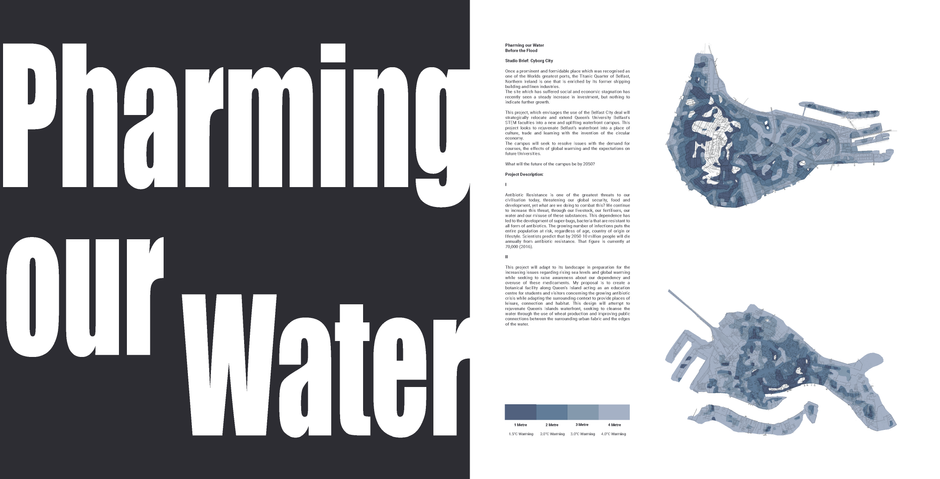PHARMING OUR WATER
Before the Flood
M.Arch I Semester Two
Studio Brief: Cyborg City
Site: Queen's Island, Belfast, Northern Ireland
Once a prominent and formidable place which was recognised as one of the Worlds greatest ports, the Titanic Quarter of Belfast, Northern Ireland is one that is enriched by its former shipping building and linen industries.
The site which has suffered social and economic stagnation has recently seen a steady increase in investment, but nothing to indicate further growth.
This project, which envisages the use of the Belfast City deal will strategically relocate and extend Queen’s University Belfast's STEM faculties into a new and uplifting waterfront campus. This project looks to rejuvenate Belfast’s waterfront into a place of culture, trade and learning with the invention of the circular economy.
The campus will seek to resolve issues with the demand for courses, the effects of global warming and the expectations on future Universities.
What will the future of the campus be by 2050?
Project Description:
I
Antibiotic Resistance is one of the greatest threats to our civilisation today, threatening our global security, food and development, yet what are we doing to combat this? We continue to increase this threat, through our livestock, our fertilisers, our water and our misuse of these substances. This dependence has led to the development of super-bugs, bacteria that are resistant to all form of antibiotics. The growing number of infections puts the entire population at risk, regardless of age, country of origin or lifestyle. Scientists predict that by 2050 10 million people will die annually from antibiotic resistance. That figure is currently at 70,000 (2016).
II
This project will adapt to its landscape in preparation for the increasing issues regarding rising sea levels and global warming while seeking to raise awareness about our dependency and overuse of these medicaments. My proposal is to create a botanical facility along Queen’s Island acting as an education centre for students and visitors concerning the growing antibiotic crisis while adapting the surrounding context to provide places of leisure, connection and habitat. This design will attempt to rejuvenate Queen's Islands waterfront, seeking to cleanse the water through the use of wheat production and improving public connections between the surrounding urban fabric and the edges of the water.
The following files are available below:










